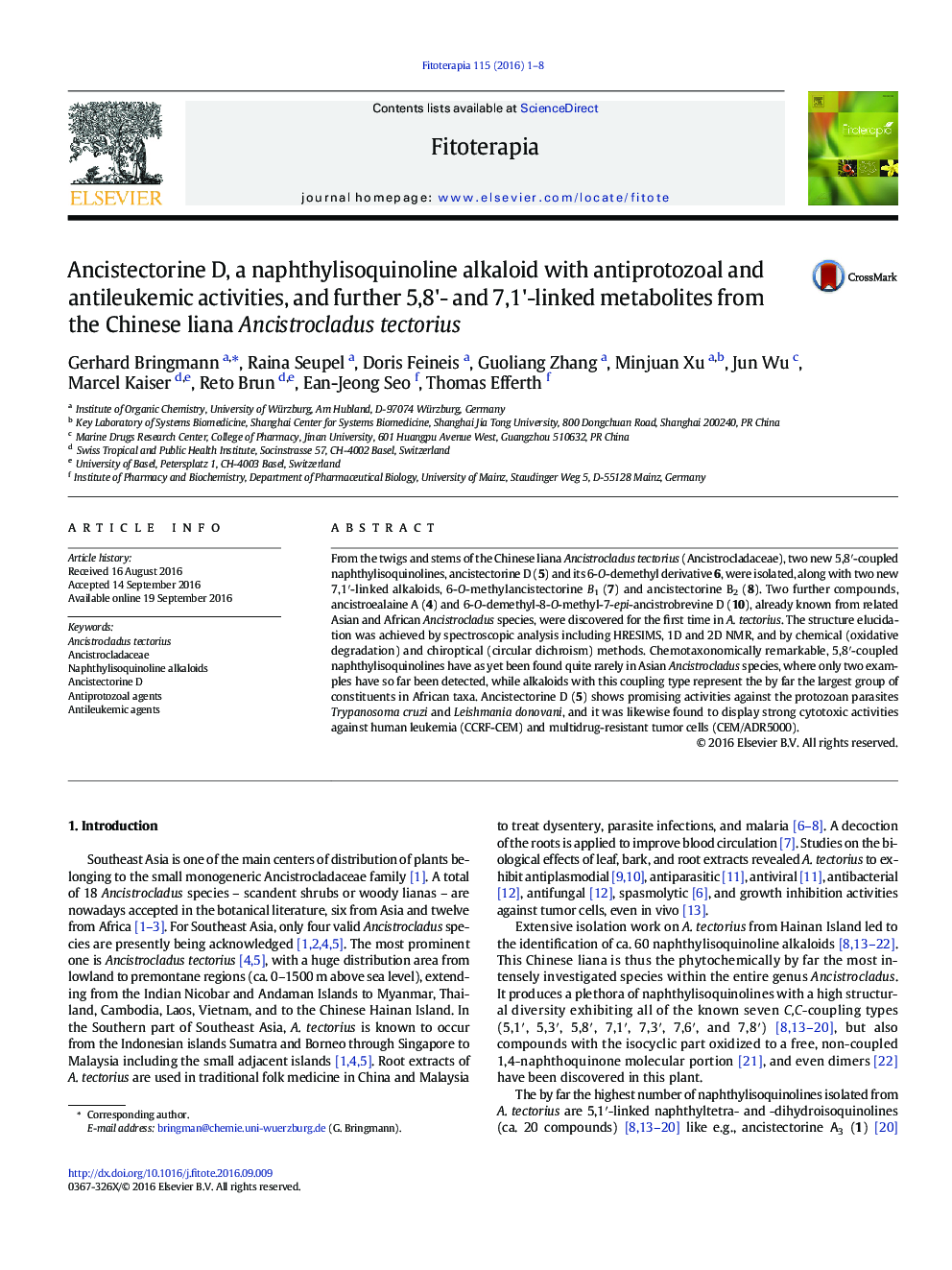| Article ID | Journal | Published Year | Pages | File Type |
|---|---|---|---|---|
| 5555075 | Fitoterapia | 2016 | 8 Pages |
From the twigs and stems of the Chinese liana Ancistrocladus tectorius (Ancistrocladaceae), two new 5,8â²-coupled naphthylisoquinolines, ancistectorine D (5) and its 6-O-demethyl derivative 6, were isolated, along with two new 7,1â²-linked alkaloids, 6-O-methylancistectorine B1 (7) and ancistectorine B2 (8). Two further compounds, ancistroealaine A (4) and 6-O-demethyl-8-O-methyl-7-epi-ancistrobrevine D (10), already known from related Asian and African Ancistrocladus species, were discovered for the first time in A. tectorius. The structure elucidation was achieved by spectroscopic analysis including HRESIMS, 1D and 2D NMR, and by chemical (oxidative degradation) and chiroptical (circular dichroism) methods. Chemotaxonomically remarkable, 5,8â²-coupled naphthylisoquinolines have as yet been found quite rarely in Asian Ancistrocladus species, where only two examples have so far been detected, while alkaloids with this coupling type represent the by far the largest group of constituents in African taxa. Ancistectorine D (5) shows promising activities against the protozoan parasites Trypanosoma cruzi and Leishmania donovani, and it was likewise found to display strong cytotoxic activities against human leukemia (CCRF-CEM) and multidrug-resistant tumor cells (CEM/ADR5000).
Graphical abstractDownload high-res image (281KB)Download full-size image
